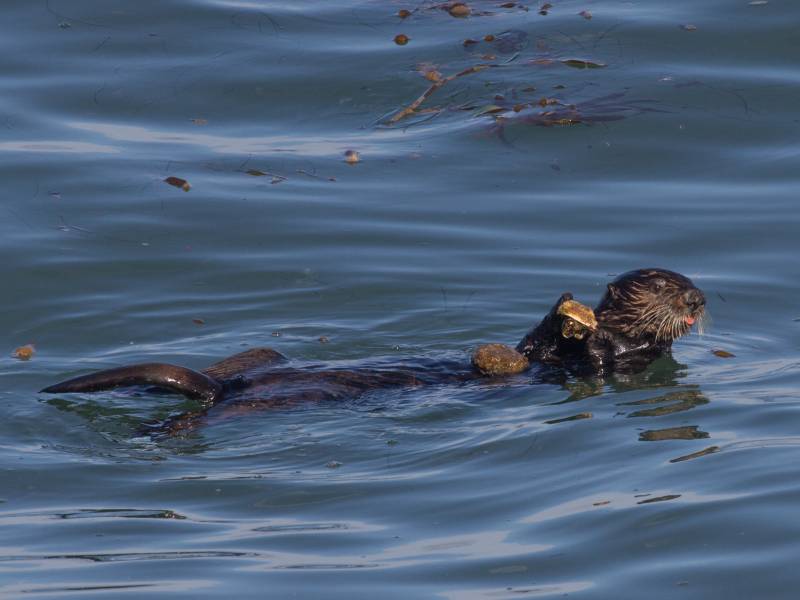But in places where lots of otters live together in Monterey Bay, “unfortunately, all those prey items have been declining or have declined,” Law says.
He says there are areas with an over-abundance of urchins — the so-called “urchin barrens” where urchins have eaten all the kelp. Since the kelp is gone, however, these urchins no longer have a good food supply and are thus calorie-poor. They offer little nutritional value for otters, who aren’t interested in consuming these so-called “zombie urchins.”
“So that means otters have to eat alternative foods,” Law says. “A lot of those alternative foods are those super-hard-shell prey items that really require some kind of external force to break into.”
Snails, for example, are abundant in the bay, but they’re low-calorie and “basically like a rock that you have to break into to eat the insides,” Law says.
While sea otters are known for using tools, not all individuals actually wield them. Some otters forgo them entirely and simply specialize in eating soft prey. Some otters use tools occasionally, while others use them most of the time that they’re foraging for food.
“We were interested in this tool use variation,” Law says, so he and some colleagues analyzed data on 196 otters in California.
These tagged otters get closely monitored by volunteer “otter spotters.” That means researchers know what they’re eating, how big and hard the prey is, and whether the otter used a tool to eat it.
It turns out that frequent tool users could eat harder and larger prey, according to a report in the journal Science. This was particularly important for female otters since they’re smaller than males and cannot bite down with as much force.
“They typically wouldn’t be able to break into harder prey,” Law says. “But they use tools more than males, so they’re able to gain access to these novel sources of food items.”
What’s more, using tools protected the otters’ teeth. The researchers were able to get dental assessments on their otters and found that tool users had less dental damage from crunching down on hard shells.
“Without their teeth, they clearly can’t eat anything. So then they die. What we’re suggesting is that this behavior really allowed them to continue living on despite not having their preferred prey,” Law says.
He explains that some otters learn to specialize in eating hard, low-calorie snails, using tools very frequently to “basically become really, really, really good at processing lots and lots and lots of snails every day” instead of searching for high-calorie foods that don’t require tools to open but are in short supply.
“This is such an important paper,” says Rob Shumaker, president and CEO of the Indianapolis Zoo and one of the authors of a book called Animal Tool Behavior.
He says scientists have spent decades documenting tool use in dozens of species; tool use in sea otters, for example, has been recognized since the 1960s. But now, studies like this one show that this research field is starting to shift.
“It’s not about describing the actual tool use or tool manufacture anymore,” Shumaker says. “It’s describing the impact that it has on that animal’s life.”


